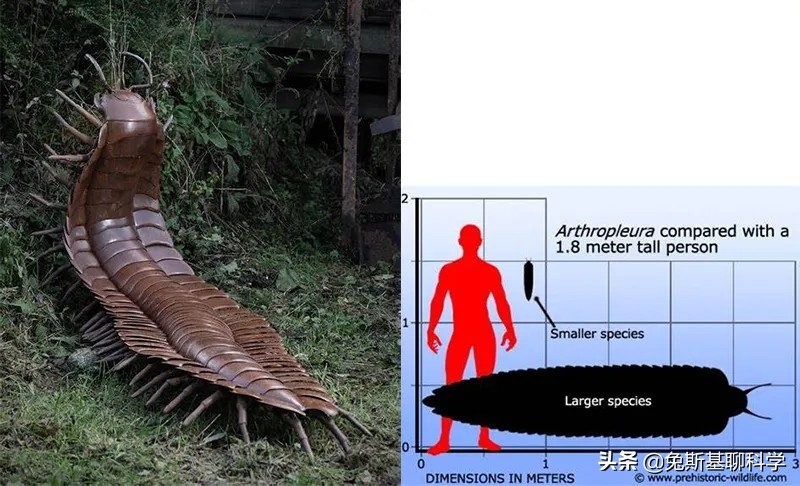The Carboniferous period is a geological epoch in earth's history. It began about 355 million years ago and ended about 295 million years ago, continuing for about 60 million years. The Carboniferous period is so named because it was an important coal-forming period in earth's history. However, another name for the Carboniferous period is more interesting to us – the "Age of Giant Worms". For example, giant centipedes nearly 3 meters long appeared in the Carboniferous Period.

Giant centipede
We know that the centipede, which is the first of the five poisons, is generally about 10 centimeters long. Even so, the centipede looks very scary. The largest surviving centipede in the world is the Galapagos giant centipede. It can grow up to 30 cm. But it is only one-tenth the size of the giant centipede that appeared in the Carboniferous Period.
In fact, the "giant centipede" that appeared during the Carboniferous period is not what we now call centipedes. It is actually a prehistoric ploidy, called the arthropod. It can only be regarded as an ancient relative of centipedes. In fact, it is closer to Ma Lu.
Even if the knotted breast is only an ancient relative of centipedes in the Carboniferous Period, why can it grow up to 3 meters?
Carboniferous forests
The reason for this is inseparable from the environment at that time of the Carboniferous Period. During the Carboniferous period, the climate on much of the planet was warm and humid. The warm and humid climate is very conducive to the growth of plants. The Carboniferous period was a period of great prosperity in the plant world. Plants extended from coastal areas to the interior of the land, and large areas of fern forests appeared on land.
The flourishing of plants has led to a sharp increase in the oxygen content in the air. Scientists have shown that the oxygen content in the air during the Carboniferous period reached 35%. That's 14 percentage points higher than the oxygen content is now.
Animals of the Carboniferous Period
Why does the increase in oxygen content in the air cause the size of arthropods to grow larger? Land arthropods such as centipedes breathe mainly through the organ system. They rely on the ventilation and diffusion of the tracheal system to allow the tissues in the body to directly absorb oxygen from the air and discharge carbon dioxide. They breathe differently than land vertebrates. Their breathing bypasses the circulatory system. As long as the oxygen content in the air increases, land arthropods can get more oxygen from the air. This has also caused many arthropods to grow to a very large extent.
Changes in the Earth's oxygen content
In addition, the warm and humid climate of the Carboniferous Period, lush vegetation and other environments are very suitable for insects to survive. Therefore, the rich oxygen content coupled with the ideal living environment has ushered in a golden age of development for arthropods. Therefore, the Carboniferous period also has an alias - "giant insect age".
Giant dragonfly
Since it is the age of giant insects, it means that many arthropods in the Carboniferous period grew very large. In addition to what we call the "giant centipede", the knotted breast, there are also giant spiders the size of human heads, with a wingspan of nearly 1 meter, giant dragonflies like eagles, and lung scorpions with a body length of 80 centimeters are the most representative terrestrial arthropods of the Carboniferous period.
Forest fires
Filling the air with high concentrations of oxygen can be a dangerous thing. Because oxygen is an accelerant. During the Carboniferous period, forest fires would occur frequently. The fire ignited the coal seam underground. Fires have been burning for decades or even centuries. Heat, toxic gases and burning coal caused about 46 percent of the species to go extinct at the time. And so there are these giant bugs. This extinction event is known as the Carboniferous coal burning event.
Therefore, the warm and humid climate and rich oxygen content of the Carboniferous Period not only created the "Giant Worm Age", but also broke the "Giant Worm Age".